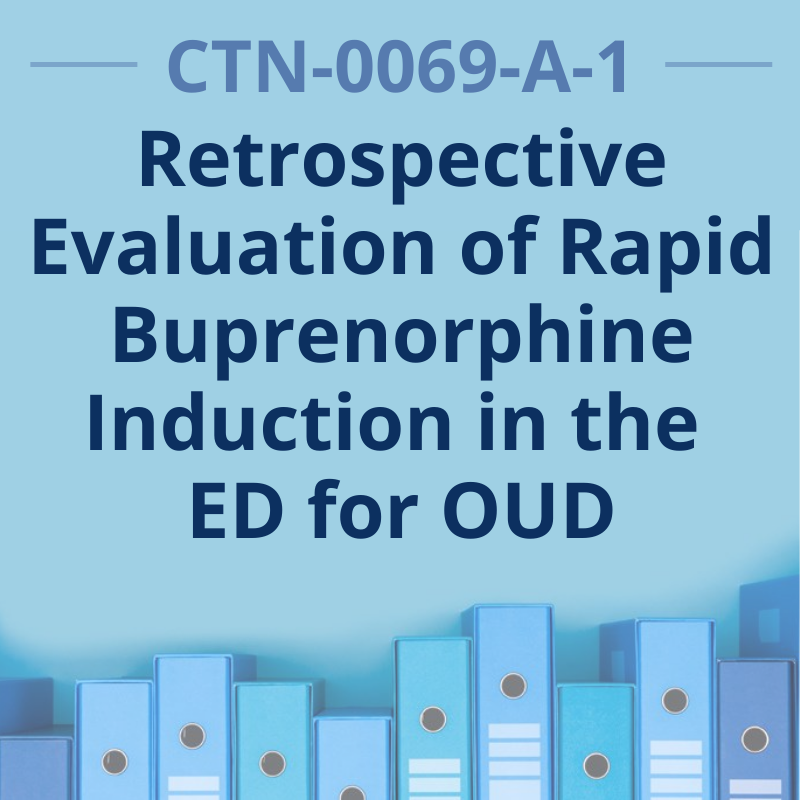CTN-0069-A-1: Retrospective Evaluation of Rapid Buprenorphine Induction in the Emergency Department for Opioid Use Disorder

Andrew Herring, MD
Lead Investigator
University of California, San Francisco
Andrew.Herring@ucsf.edu
ED initiated buprenorphine (BUP) has been demonstrated to improve engagement in treatment for patients with Opioid Use Disorder (OUD); however, under current BUP induction protocols, only a partial induction is feasible during a brief ED visit where 2-8mg sublingual (SL) BUP is administered every 1-2 hours. During a recent 12 month period at Highland Hospital in Oakland California, an ongoing quality assurance surveillance included approximately 350 ED patients with OUD initiated on BUP, approximately half of whom received high dose induction of 24-32 mg SL BUP with referral within 72 hours. This study will entail a rigorous retrospective chart review of these patients to determine the clinical course, rate of engagement and presence of adverse events in this total population of patients with ED-initiated BUP. Characteristics, ED course, adverse events, and clinical outcomes of patients receiving ED rapid buprenorphine induction will be described.
Primary Findings
A high dose of sublingual buprenorphine was administered by 54 unique clinicians during 366 encounters (63.2%), including 138 doses (23.8%) greater than or equal to 28 mg. No cases of respiratory depression or sedation were reproted. All 5 (0.8%) cases of precipitated withdrawal had no association with dose; 4 cases occurred after doses of 8 mg of buprenorphine. Three serious adverse events unrelated to buprenorphine were identified. Nausea or vomiting was rare (2%-6% of cases). The median (interquartile range) length of stay was 2.4 (1.6-3.75) hours. Findings suggest that high-dose buprenorphine induction, adopted by multiple clinicians in a single-site urban ED, was safe and well tolerated in patients with untreated OUD.

Primary Outcomes Article: Herring AA, et al. High-Dose Buprenorphine Induction in the Emergency Department for Treatment of Opioid Use Disorder. JAMA Network Open 2021; 4(7):e2117128. [get article]
Related Studies
- CTN-0069: Opioid Use Disorder in the Emergency Department (Project ED Health)
- CTN-0069-A-2: The impact of COVID-19 on individuals with Opioid Use Disorder Who Received Emergency Department Care: A Survey Study of Project ED Health Participants and Medical Leadership at Four EDs
Related Resources
Node Involvement
Lead Node(s):
All Participating Nodes: